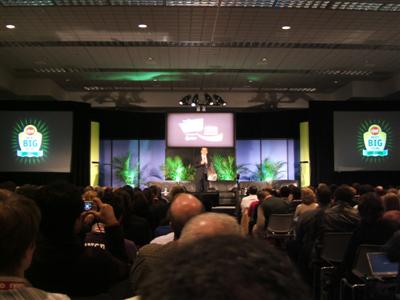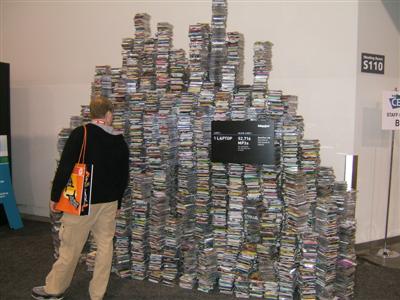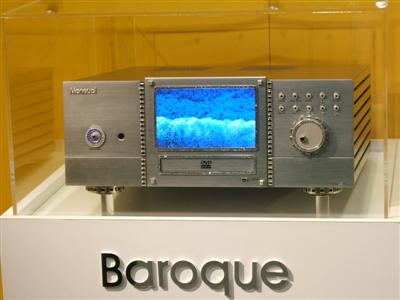There were lots of impressive products at CES 2007, most of which have been covered in detail elsewhere.
Here are some that impressed me but haven’t received much coverage:
LG’s 3D Television
Buried deep within LG’s massive stand was a 42″ high-definition LCD screen displaying genuine 3D video. This has apparently been around for a few months, but it was the first I’d heard of it.
The effect is stunning – proper 3D with no special glasses required. As with traditional 3D displays (such as IMAX and motion simulator rides), it takes your eyes a second or two to adjust – then everything jumps into focus.
Of course, there are some limitations. The optimal viewing range is 3M-7M from the display, with a maximum viewing angle of around 30 degrees. All the video on display was computer generated; I’d have liked to see some live video as well.
The screen works by integrating 25 separate LCD panels, each of which produces a display with a very narrow viewing angle. The 25 views are positioned around the objects being viewed, so that standing in any position, your eyes will see only two views at a time (one for each eye). The panel is thicker than a normal flat panel, but not overly so – about 6-8″ deep.
Capturing live video to work with this system will require some advanced cameras, since it would need to record 25 images simultaneously, each at a slightly different perspective.
Regardless, this is deeply impressive technology – some day, no doubt, all TVs will look like this.
Smyth Research’s Surround Sound Headphones
If 3D television wasn’t enough, we stumbled upon 3D sound in the form of Smyth Research’s new virtual surround sound headphones. These aim to allow headphone users to experience a surround sound movie or album in all its glory, without alienating their neighbours.
While most DVD players and A/V receivers offer some form of downmixing to let you listen to surround sound movies on headphones, this new system is in a completely different class. A sensor mounted on the headphones identifies the position and orientation of the headphones in space, and the sound is adjusted accordingly.
When you turn your head to the left or right, audio coming from each speaker appears to stay at the same location within the room, rather than moving with your head as normally happens with headphones. The effect is amazing – the first time I heard it, I immediately took the headphones off to confirm that the soundtrack hadn’t simply been routed back to the main speakers again.
The system we saw used an infra-red transmitter positioned above the TV to send out a reference signal which a reciever on the headphones picked up, analysed, and then transmitted back to the sound processor via the audio cable. This approach allows several headphones to be used at once in a single room.
With the infra-red solution, listeners must not turn their head more than 60 degrees away from the TV, or the effect is lost. This can be overcome using an alternate RF positioning system.
Smyth Research don’t sell hardware products themselves; instead, they are licensing the technology to manufacturers for inclusion in their audio equipment. The demo we heard was using Yahama equipment; expect products to be on the market by the end of 2007.
As an aside, Smyth Research are based in Bangor, Northen Ireland – it was nice to see some Irish representation at the show. They were previously involved in the development of the DTS Surround Sound system, so their audio pedigree is well established.
The Laser Mouse That Works On glass
A4Tech had a stand in the international section over at the Hilton, where they were showing their laser mouse that works on glass.
Most optical mice fail dismally when moving over a shiny or glass surface; not the A4Tech mouse. I spent some time playing with their demo setup, and can confirm that it worked just as well on glass as on other surfaces. A simple trick, no doubt, but extremely useful.
Apparently the mouse is already on sale in Korea – hopefully it will make it to Europe soon.


